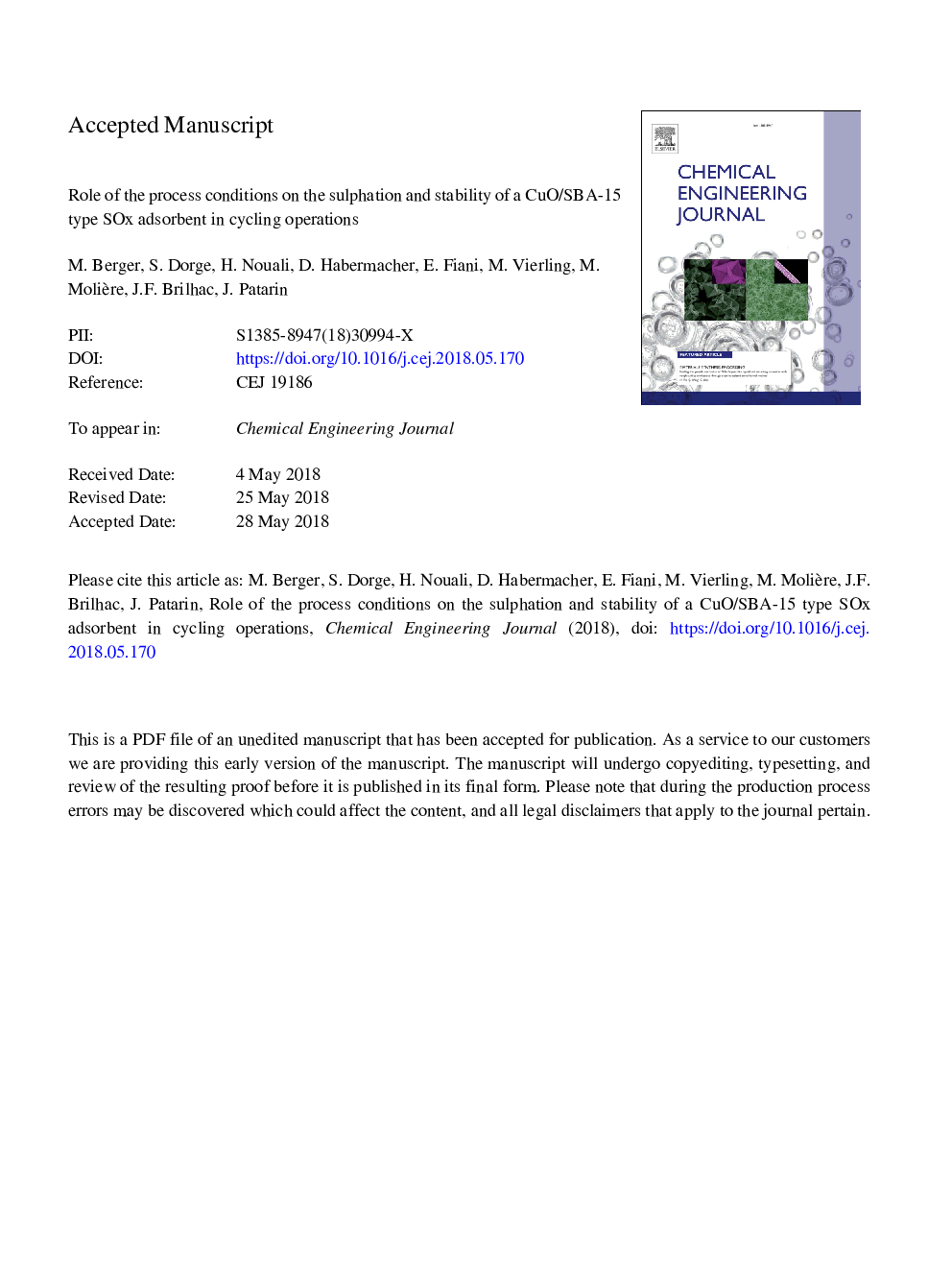| Article ID | Journal | Published Year | Pages | File Type |
|---|---|---|---|---|
| 6578339 | Chemical Engineering Journal | 2018 | 40 Pages |
Abstract
SOx abatement is one of the major challenges for the industry with regards to the more stringent European regulations. Despite their good performance, current DeSOx technologies are energy-intensive and produce waste. Flue gas desulphurisation using SOx adsorbents thus is a viable alternative. However, the development of such a technology is still hampered by the adsorbent short lifetime within the wide range of conditions prevailing at the exhaust of combustion engines. In this work, a CuO/SBA-15 adsorbent was assessed as a SOx trap material under different sulphation conditions (temperature from 350â¯Â°C to 450â¯Â°C, gas composition (SO2: 250, 450 and 450â¯ppm; O2: 150â¯vol%), GHSV from 18,000 to 110,000â¯hâ1 and sulphation time). The SO2 adsorption capacity of the adsorbent was greatly impacted by the temperature: the higher the temperature, the better the performance. Indeed, the dynamic adsorption capacity is equal to 31â¯mgSO2/gads, 37â¯mgSO2/gads and 52â¯mgSO2/gads at 350â¯Â°C, 400â¯Â°C and 450â¯Â°C respectively. Conversely, no significant changes in the SO2 dynamic adsorption capacity were observed whatever the SO2 and O2 molar fractions in the adsorption gas stream. The GHSV appears as a very sensitive parameter since the higher this parameter, the worse the adsorbent performance (e.g. for GHSV of 25,000â¯hâ1, Cadsâ¯=â¯37â¯mgSO2/gads; for GHSV of 50,000â¯hâ1, Cadsâ¯=â¯19â¯mgSO2/gads). Stabilised SO2 adsorption capacities along 25 cycles were obtained by regenerating before the breakthrough. Under these conditions, no SO2 emission occurs during the adsorption step, which represents the major technology block faced in any multicycle adsorption-based process over time.
Keywords
Related Topics
Physical Sciences and Engineering
Chemical Engineering
Chemical Engineering (General)
Authors
M. Berger, S. Dorge, H. Nouali, D. Habermacher, E. Fiani, M. Vierling, M. Molière, J.F. Brilhac, J. Patarin,
